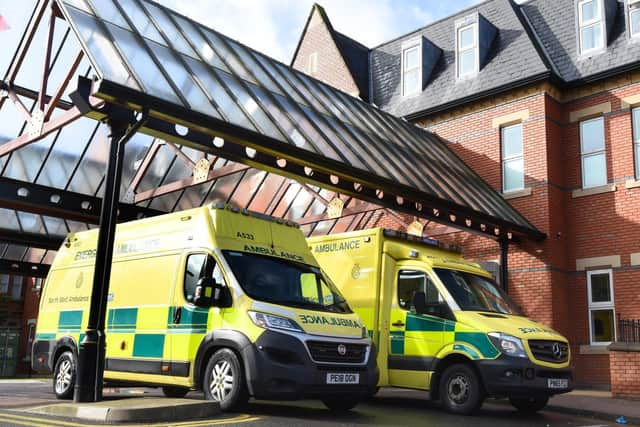Wigan Infirmary's A&E unit gets busier as patients return
and live on Freeview channel 276
Fewer people sought help from the unit earlier this year, at the height of the coronavirus pandemic, mirroring a drop in attendance rates at casualty departments around the country.
But Wrightington, Wigan and Leigh Teaching Hospitals NHS Foundation Trust has seen both its A&E unit and Leigh Walk-In Centre getting busier in recent months.
Advertisement
Hide AdAdvertisement
Hide AdNew data published by NHS England shows 7,251 people sought treatment at the A&E unit last month.


That was a rise of 5.4 per cent from 6,879 in July and just 1.1 per cent down on the 7,336 people who attended in August last year.
The walk-in centre also saw more patients, up 12.3 per cent from 3,253 in July to 3,655 in August.
But this remained 26 per cent lower than August last year, when there were 4,940 patients.
Advertisement
Hide AdAdvertisement
Hide AdA&E attendances at hospitals in England continued to be below levels a year ago, with NHS England saying the fall was “likely to be a result of the Covid-19 response” – suggesting that people were still staying away from A&E departments because of the outbreak.
In Wigan, hospital chiefs have urged people to still get help from the emergency departments if they need it, amid concerns for the impact that not seeking treatment could have.
Nationally, a total of 1.7 million attendances were recorded in August, down 19 per cent from 2.1 million attendances in August 2019.
But the year-on-year drop for these has been reduced, from a fall of 30 per cent recorded in July and 33 per cent in June, reflecting the trend seen in Wigan.
Advertisement
Hide AdAdvertisement
Hide AdEmergency admissions to A&E departments at hospitals in England also showed a fall last month, down 10 per cent from 529,231 in August 2019 to 473,903 in August this year.
But Wigan bucked the national trend, with 3,173 admissions last month marking a 3.8 per cent rise from 3,055 the year before.
The trust performed well when it came to waiting times, with 93.3 per cent of people seen within the target time of four hours last month.
This was above the national performance of 89.3 per cent and remains just below the national standard of 95 per cent, which the trust and most others around the country had failed to meet for some time before the coronavirus pandemic.
Advertisement
Hide AdAdvertisement
Hide AdWhen considered separately, Wigan’s A&E unit scored 90.1 per cent last month for admitting, transferring or discharging people within four hours, while the walk-in centre achieved 99.5 per cent.
A total of 133 people had to wait more than four hours after the decision to admit them was made, but none waited for more than 12 hours.
This was a big drop from 432 patients facing a four-hour wait in August last year, but up on the 122 in July 2020.
All eyes will be on A&E departments in coming months, as they enter the traditionally busy winter months while still being on the frontline of the coronavirus pandemic.
Advertisement
Hide AdAdvertisement
Hide AdBut other areas of hospitals are also dealing with the impact of the outbreak.
The number of people having to wait more than 18 weeks to start hospital treatment in England rose to 2.15 million in July, more than three times the number in July 2019 (620,454) and the highest number for any calendar month since current records began in August 2007.
The figures also show 83,203 people had waited more than 52 weeks to start hospital treatment in July, the highest number for any month since November 2008.
The total number of people admitted for routine treatment in hospitals in England was down 51 per cent in July compared with a year ago, and just under half a million patients had been waiting more than six weeks for a key diagnostic test, including an MRI scan, non-obstetric ultrasound or gastroscopy
NHS England figures also show that a total of 179,503 urgent cancer referrals were made by GPs in England in July, down from 221,805 in July 2019 – a fall of 19 per cent.